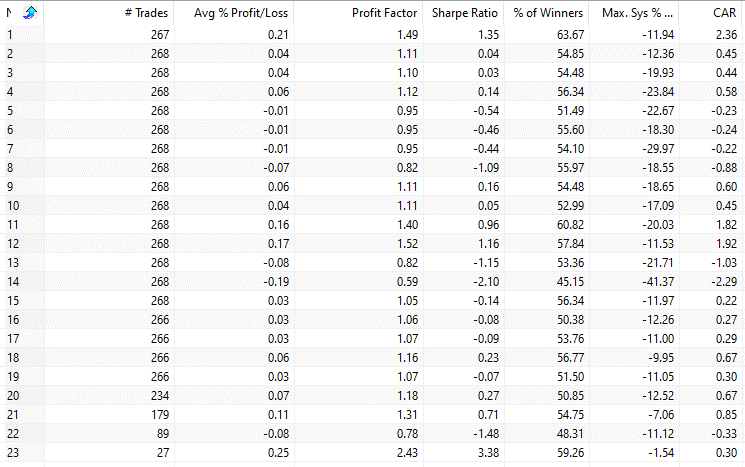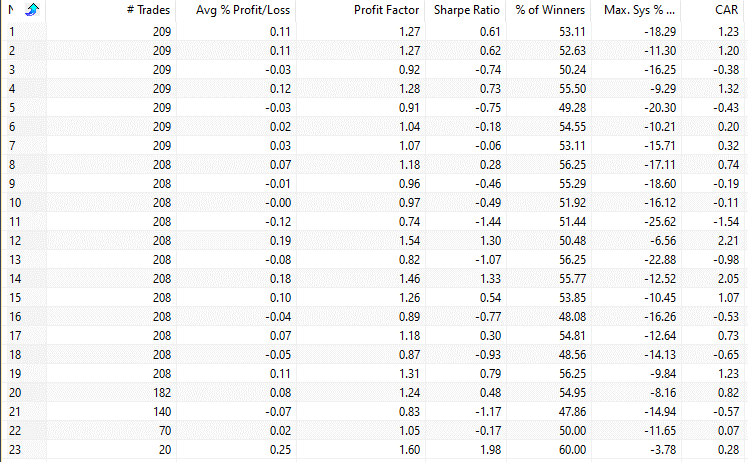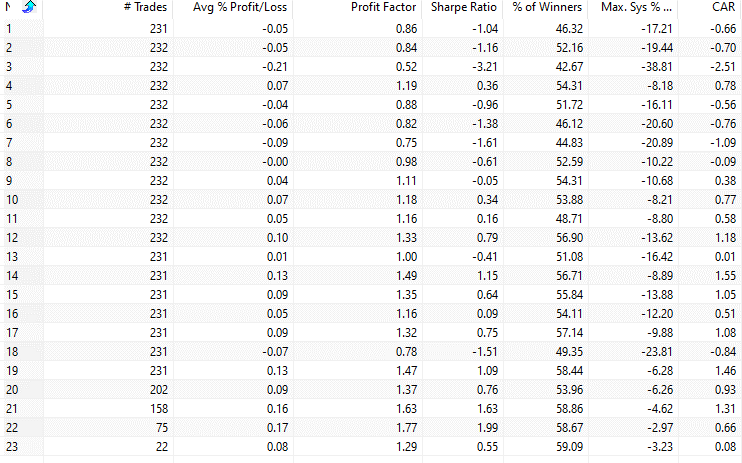What Is The Best Trading Day Of The Month?
What is the best trading day of the month? We are strong believers in seasonal trading strategies, and one of the best seasonalities is specific trading days of the month. Most articles about seasonal trading refer to calendar days, but a much more accurate trading term is the trading day. The calendar and trading days can be completely different. In this article, we test the performance of each trading day in the S&P 500, the gold price, and long-term Treasuries.
In the stock market, the best trading days of the month are the last and first of a new month. The gold price seems to have a rather erratic distribution pattern, while long-term Treasuries have a strong end-of-month effect (and very weak at the beginning of the month).
This is our free newsletter. For a list of the Bonus Articles we have for our Supporting Members, please press here.
Alternatively, you can test our subscription:
First, let's look at calendar days vs trading days:
Calendar day vs trading day
The calendar day is rarely the trading day. Let's take an example:
The 1st of January 2022 is a Saturday, while the first trading day of the new month and year is on the 3rd of January. If you want to backtest the performance of the first trading day of the month you can't use calendar days.
There are never more than 23 trading days in a month, while the number of calendar days is between 28 and 31. This means you can't backtest the last trading day of the month by using calendar days, either.
As the month goes on, the difference between calendar and trading day increases.
This might seem pretty self-evident, but nevertheless, we want to make sure the reader understands the differences.
How to calculate the trading day
All trading platforms have a function that easily determines the calendar day. For example, in Amibroker you simply write day()==31 if you want to buy or sell on the 31st of any month. It's straightforward and easy. Likewise, determining the first and last trading day of the month is also pretty straightforward.
Unfortunately, no software (to our knowledge) calculates the trading day easily. To find the trading day, you need to write a script or refer to a calendar. We use the latter, described in our Amibroker course in lesson 38. It's not the scope of this article to provide you with this.
Our backtests of the trading days of the month
Below we backtest each trading day in three ETFs: SPY, GLD, and TLT.
We invest 100 000 in trading day N at the inception of the ETF and let the amount compound until today. However, we are mostly interested in the percentage gain per trading day.
Each trading day measures the performance from close of the day before until today's close. We use Amibroker's optimize function.
What is the best trading day of the month in the stock market?
Let's start by backtesting the best trading days in the stock market from the year 2000 until today. We use SPY and the S&P 500 as a proxy for the stock market and we measure the percentage performance from close to close of trading day N of the month.
This is the result:
The first column is the trading day of the month and measures the average gain from the close of the day before until the close of today.
The best trading day of the month is the first day and the 23 (but this one is are). We can clearly see a pattern of good days at the beginning of the month and at the end of the month. The results are not surprising. In a previous article, we showed you the turn of the month strategy.
What is the best trading day of the month in gold?
Let's find the best trading days of the month in the gold price. We use GLD as a proxy for the gold price and we test from 2006 until today:
The table is a bit more erratic than in stocks without any clear patterns.
What is the best trading day of the month in long-term Treasuries?
Our last backtest is in long-term Treasuries. We use TLT as a proxy and test from 2003 until today:
The first seven trading days of the month are terrible, while the last trading days of the month are very good.
In reality, with the tailwind from falling interest rates, all trading days are good except for the beginning of a new month.
Relevant reading about seasonality trading:
We end the article by listing a few articles that are in the same ballpark as this one:
The Thanksgiving and Black Friday effect in the stock market
The end of the year rally in stocks (S&P 500 Santa Claus rally/effect)
What is the best trading day of the month?
What is the best trading day of the month? The short studies in this article show that both stocks and long-term Treasuries have distinct seasonalities based on the trading day of the month: the stock market is strong at the start and end of a month, while long-term Treasuries are weak at the start but end strongly. We use these seasonal tendencies in specific trading strategies.
Alternatively, if you prefer to pay a small fee for a monthly trading service, we offer a subscription service that contains monthly Trading Edges.




